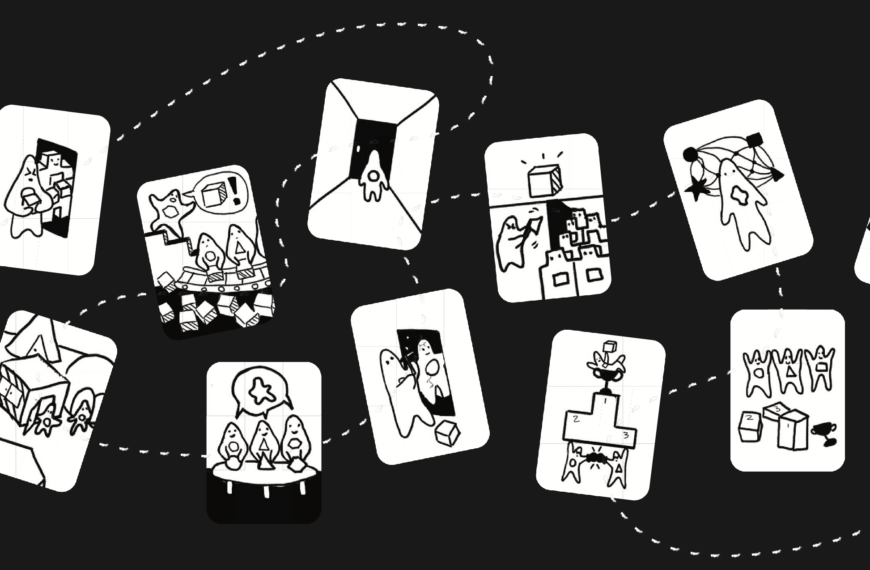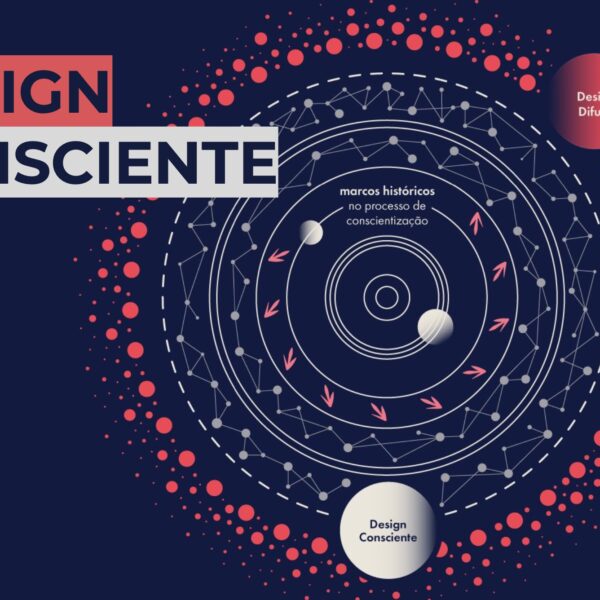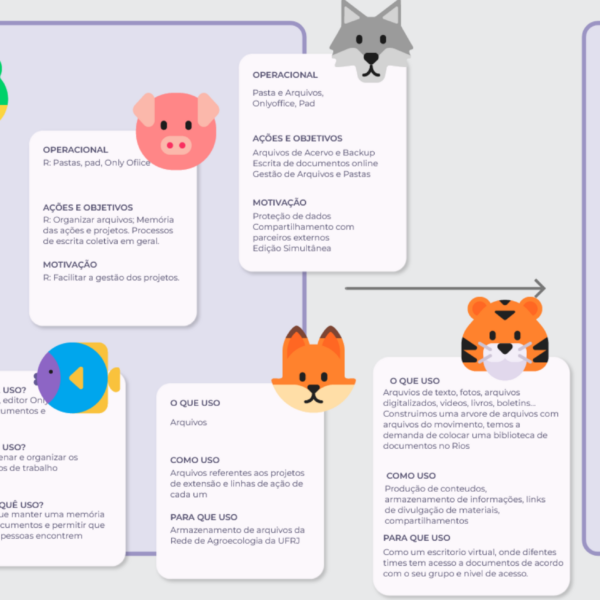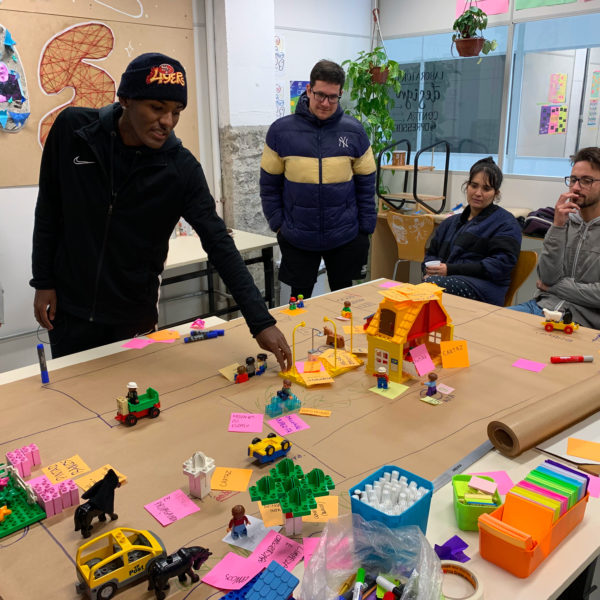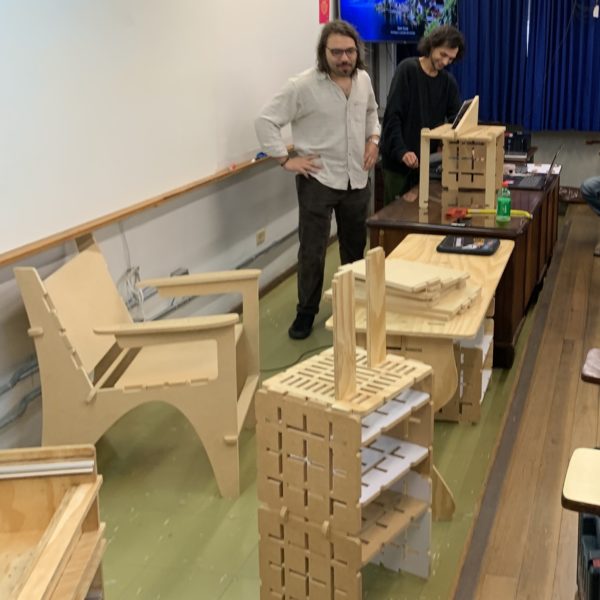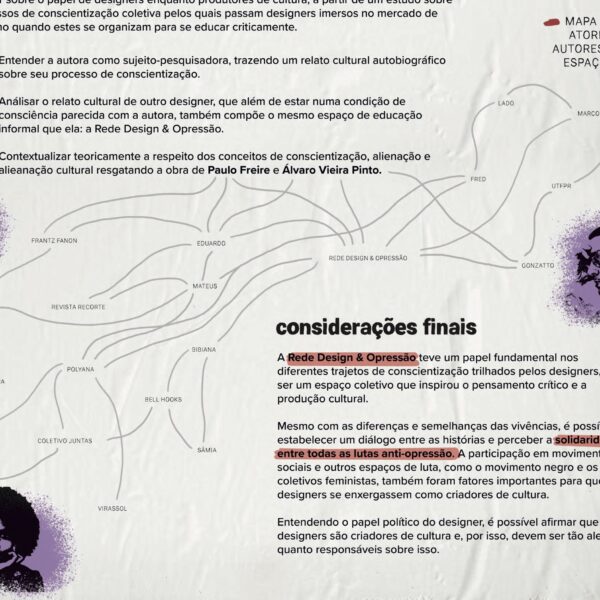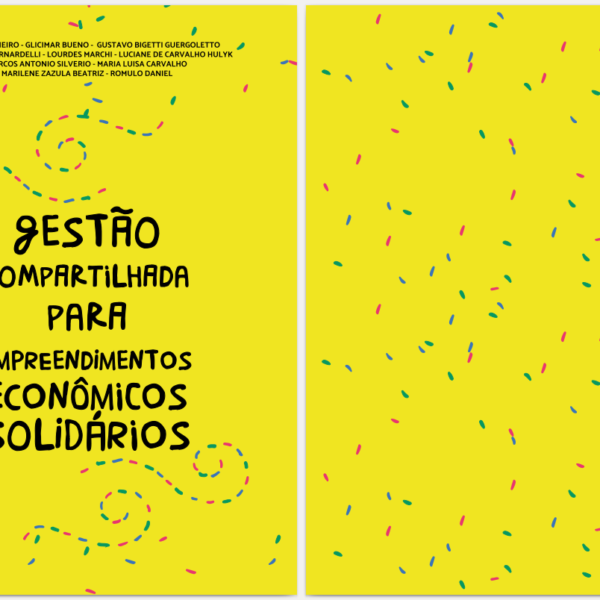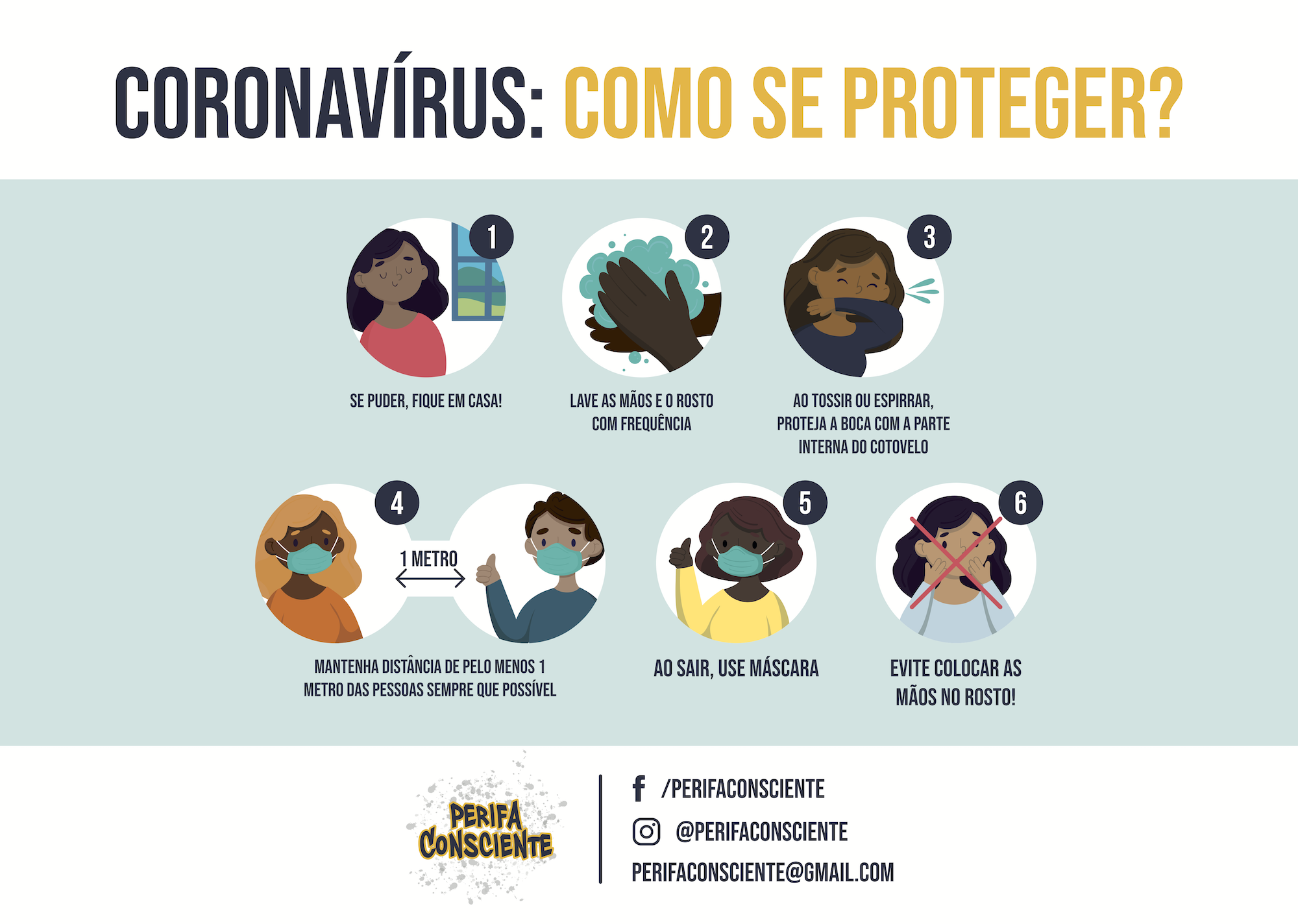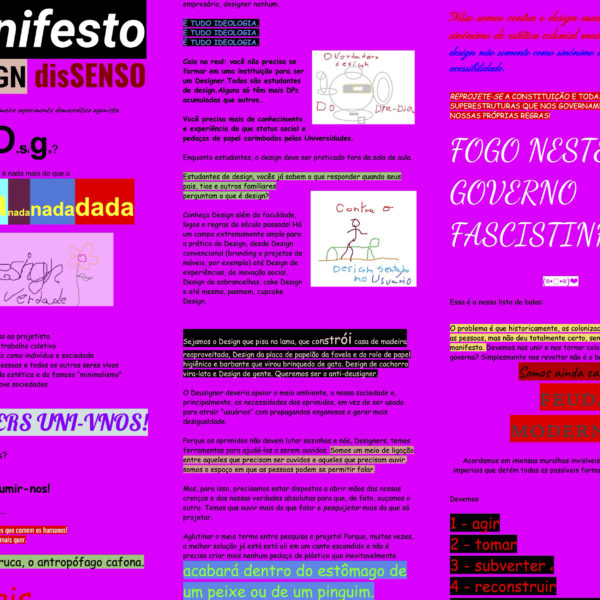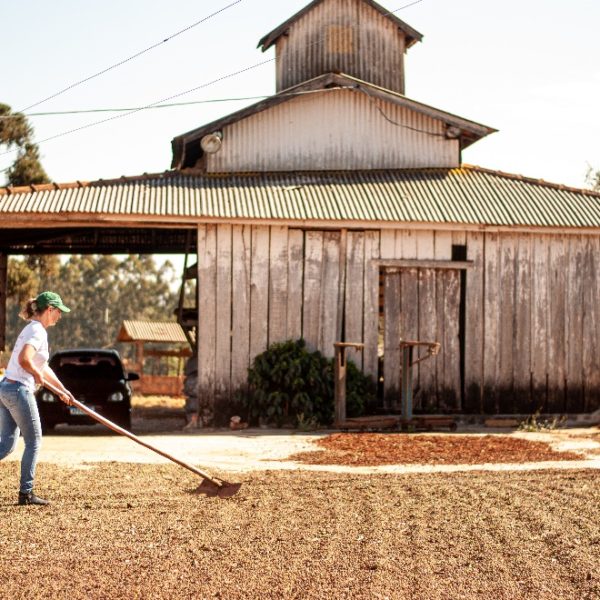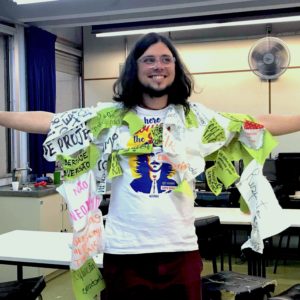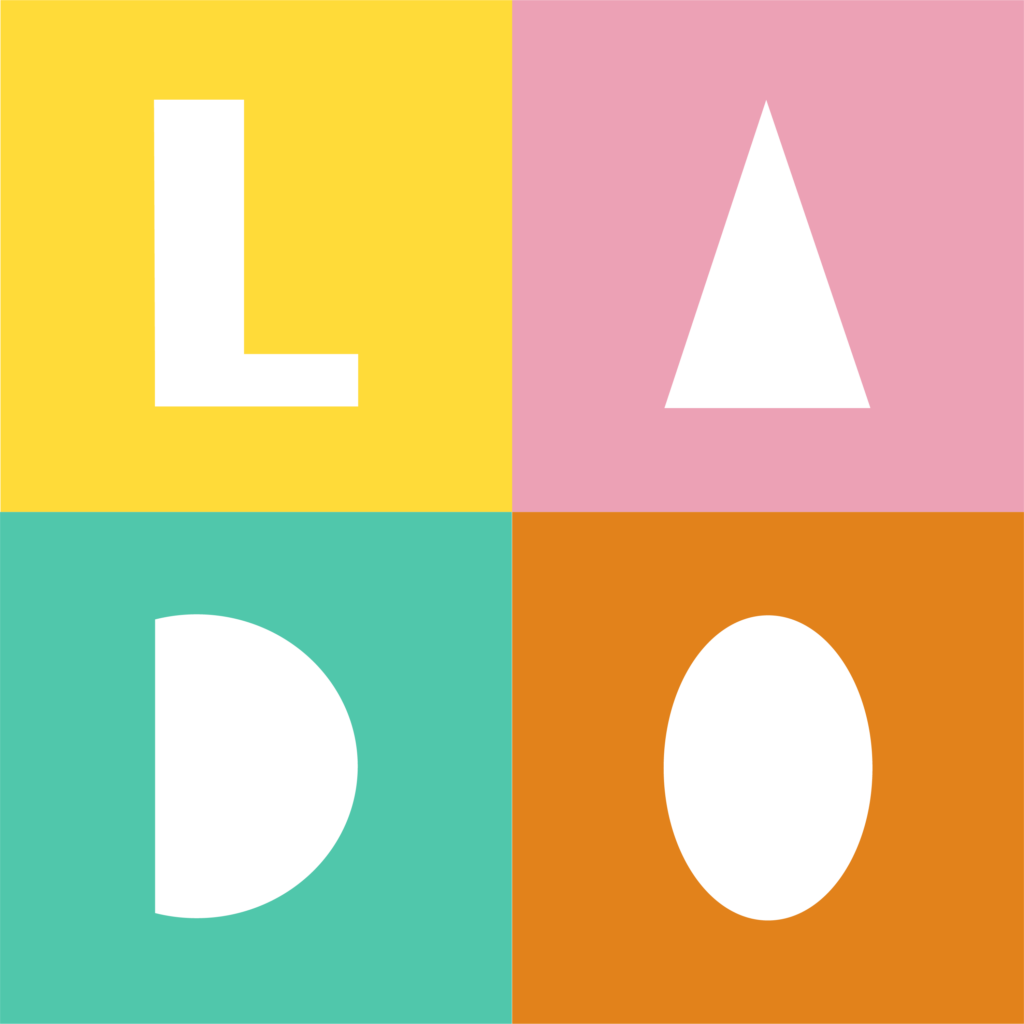
The Laboratory of Design Against Oppressions (LADO) is an open, horizontal space for critical education, scientific research, and transformative action at UTFPR. Attentive to the objectives of student involvement and participation in university outreach, LADO is organized through self-management, including collective decision-making and distribution of power among the several working groups created to coordinate each of its experiments. LADO experiments are shared on Instagram.
The laboratory develops three types of experiments, integrating teaching, research and extension:
1) Formative actions: carrying out formative activities through interaction with undergraduate disciplines, organizing events, offering courses and study groups, developing open educational resources, and visits to communities.
2) Technological actions: identification, transformation, and creation of concepts, tools, techniques, and Design methods and tools that assist in confronting oppressions.
3) Community actions: design actions in collaboration with oppressed communities, favoring the dialogue between community and university in the search for confronting oppression and achieving transforming actions.

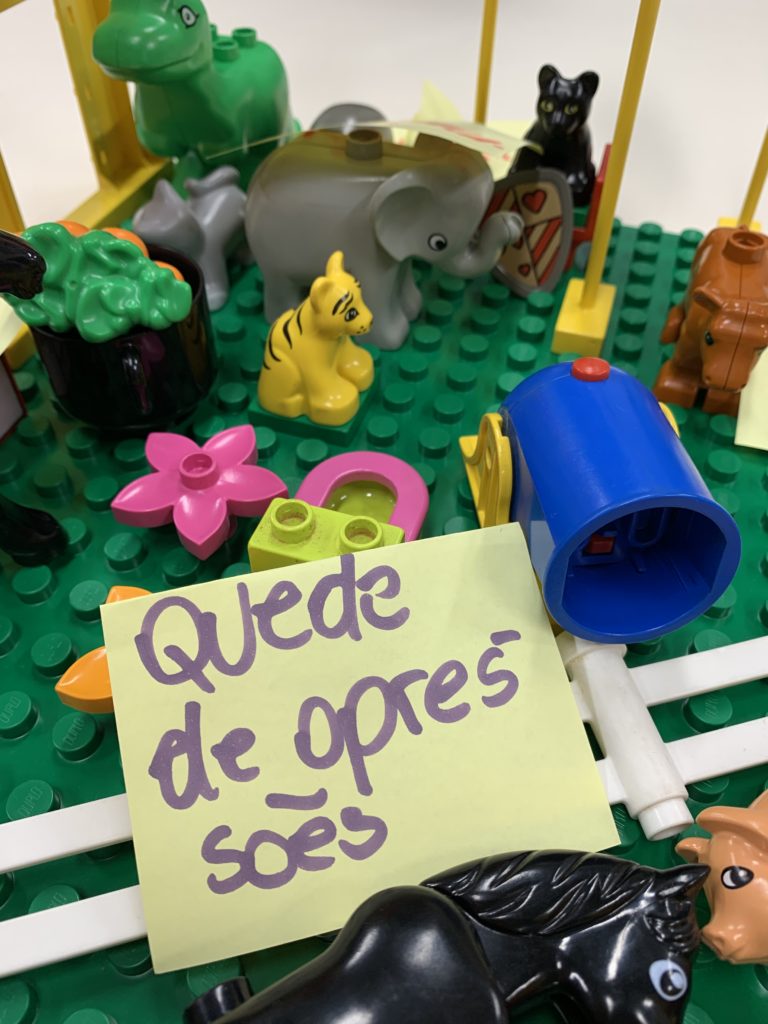


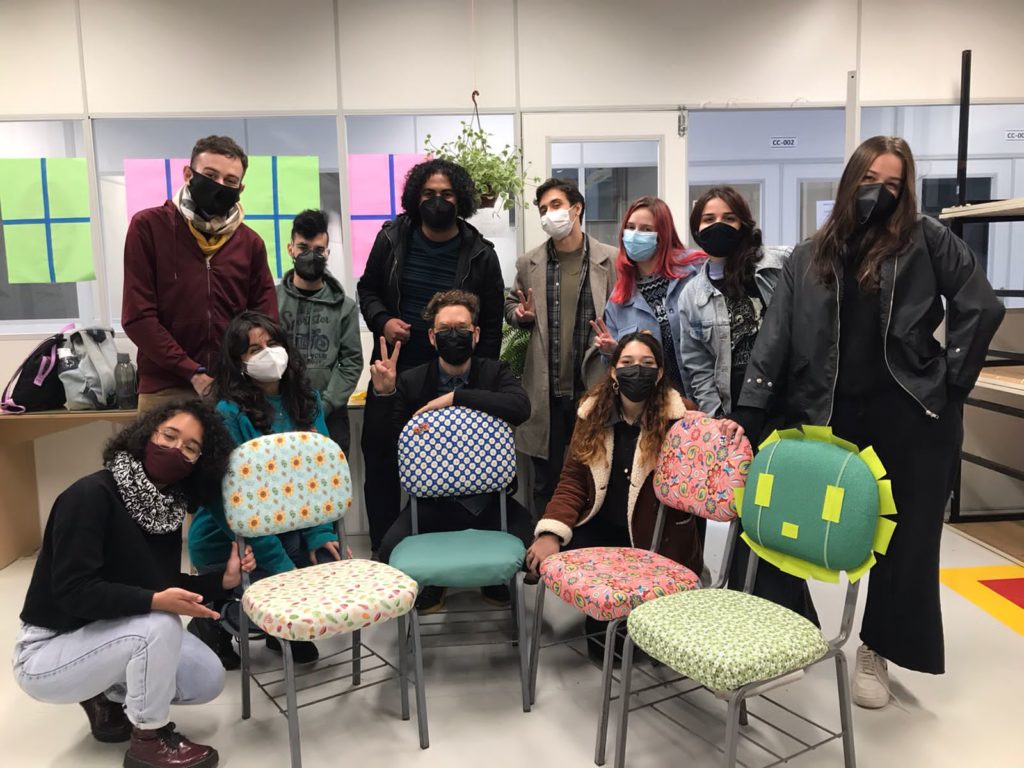
Design process
Frederick van Amstel shared the following description of LADO design process in an Interactions Magazine article:
Our Laboratory of Design Against Oppression (LADO) at Universidade Tecnológica Federal do Paraná typically starts new projects from the communities our students are already part of or from the communities that seek our partnership. Our student researchers act as brokers, articulating each project’s communities, academia, and other collective bodies. When they do not know the community, they respectfully join community activities and try to understand them as if they were insiders. That understanding takes time to develop, as it depends on establishing authentic relations with community members.
If the researcher already had such relations, it is possible to skip these initial steps and move to the negotiating proposals phase. In this phase, the community tries to understand how the researcher’s design knowledge could contribute to strengthening its activities. This phase hardly ends with a clear plan, yet we always find an open thread to pick up. As the researcher gets some responsibility, the problematizing phase starts.
Instead of solving the problem or fulfilling the community members’ needs, the researcher tries to find the historical contradictions behind these problems and needs. In this laboratory, we craft the skill to trace design problems to the contradiction of oppression to mobilize liberation efforts to transform the community’s reality. There is always a history of liberation fights that we can connect to, even if they are dormant at that moment.
The final phase consists of articulating or joining creative insurgencies against oppression. Throughout this process, we try to be very sensitive to the community’s existential time: what the community claims to have been in the past, what the community strives for being now, and what the community dreams of becoming in the future. Since we are dealing with transforming reality, the critical design quality for us is historicity, which refers to how well-grounded on past projects a future project currently is.
Ontological work
Oppressed communities usually expect our researchers to remain outsiders who merely come to exchange designs with them. They just want to tell us what they need and wait for our designs to be delivered. If existential time is urgent, we design for them as expected. However, if existential time is thicker, we grow the expectation into learning design by designing with us. In this way, we promise, that the community will be more knowledgeable about what they do with design.
While designing this way, our researchers meet experienced people, listen to their stories, visit historical places, and look at pictures and other documented memories. Since we are interested in what the oppressed can do with design, we pay attention to the community-produced assets. More often than not, the community does not have what it needs due to systemic oppression. That means the community looks ungrateful for what they have at hand and appreciates what they don’t have.
Oppressed communities typically have low self-esteem due to judging themselves as underdeveloped, uneducated, unequipped, or simply ugly concerning the oppressors. From the moment the community looks at its history with an appreciative perspective, the same motives that generated shame can now generate pride. That is not just finding the community assets but changing how they look at them. We prefer to use the concept of handiness (amanualidade) to refer to the things a community has at hand to develop further. These things are there because the community worked hard to make them available in the past, so we should not ignore such embodied intentions. Instead, we strive to support autonomous handiness development in our community engagements, even if that means using technologies that an oppressor would judge outdated from their standpoint.
From LADO’s standpoint, the most advanced technology is the one the community can use for their own benefit. We see many laboratories trying to bring supposedly advanced technologies to underprivileged communities that fail miserably, at least in fighting oppression. We cannot afford to do that. That is why we must be very keen on the community’s handiness when designing something. This reflection will often move us from designing with to designing by, or in other words, infrastructuring the design that the community is already doing.
The community cannot escape this limit-situation easily because they quickly turn their attention to something else when they get what they want. The oppressors exploit this weakness by constantly creating fresh designs that can lure the oppressed into accepting the exchange of a large part of what they have at hand for a small piece of what they don’t have at hand. Looking at these exchanges’ history helps the community break the cycle and appreciate their handiness. Instead of designing new things based on futuristic external references, the community starts to design things based on what they have already designed in the past, even if that is considered less advanced at first sight. For the time being, they realize that the most advanced design is the one they have at hand.
This participatory way of designing leads to better designs for the community. However, we do not stop designing, as we are interested in overcoming the oppression of handiness. That means helping the community realize the design that is already part of their history, even before engaging with our researchers. In the problematizing phase, we show that handiness oppression undervalues community designs as if they were not designs. For example, handcraft, event organizing, agriculture, and other activities have been historically devalued, but they can be reframed as forms of design.
Recognizing the invisible and inevitable design of so-called manual work enables community engagement to move towards designing by the community. When possible, the community members become the protagonists of the design activity in the insurgencies phase: they decide what they will create, find the resources, and implement the project. In this case, the researchers’ role is to support the protagonists by infrastructuring them with tools, processes, and spaces. For example, we make custom design toolkits, customize free software, set up design spaces, and offer counseling and care. As the design project unfolds, the community becomes increasingly conscious of its handiness and historicity. There is less disruption when leaving the community because the design infrastructure is already installed on previous infrastructures.
Showing examples of how different communities have dealt with similar oppression provokes the expansion of the design space. By doing so, what was once considered impossible can quickly turn into possible. Sometimes, we promote encounters between different communities to make the new possible more concrete to their senses. Other communities can easily relate if they share a common oppressor, like rural and urban women workers who fight sexist men. Communities can also relate through analogy and allyship if they face different oppressors, as in the case of immigrants.
Our best strategy has been to connect people from other communities and craft solidarity relations across their struggles. This strategy typically leads to sharing information, resources, tools, and abundant spaces among the oppressed. Once the oppressed realize their strengths, they start to see the oppressor’s weaknesses. Then, we can gradually move from resisting to transforming reality.
Selected LADO projects
Expected impacts
The expected social impacts are:
1) Raising awareness among students, faculty, and communities involved in issues related to oppression and their confrontations.
2) Liberation of underestimated or denied human development.
3) Increase the collective capacity to confront oppressions by developing and offering society appropriate design tools and methods for this issue.
4) Concrete actions to confront oppressions experienced by communities working in partnership with the laboratory.
References
Bizzotto dos Santos, W.B., Mazzarotto, M.,and Van Amstel, F.(2023) Learning design as a human right: the beginnings of a design lab founded on critical pedagogy, in Derek Jones, Naz Borekci, Violeta Clemente, James Corazzo, Nicole Lotz, Liv Merete Nielsen, Lesley-Ann Noel (eds.), The 7th International Conference for Design Education Researchers, 29 November – 1 December 2023, London, United Kingdom. https://doi.org/10.21606/drslxd.2023.104
Bizotto dos Santos, W., Mazzarotto, M., & Van Amstel, F. (2024). Tomando um LADO: formação crítica e prática de liberdade no Laboratório de Design contra Opressões. Arcos Design, 17(1), 143–175. https://doi.org/10.12957/arcosdesign.2024.78425
Lucy Pei, Edgard David Rincón Quijano, Angela D. R. Smith, Reem Talhouk, and Frederick van Amstel. 2022. Assets and community engagement: a roundtable with HCI researchers and designers. interactions 29, 5 (September – October 2022), 44–47. https://doi.org/10.1145/3554975
